Arabiyy
Peoples native to the Arabiyyan Desert and Balkurtiz, a peninsula which they call Jazirat al-Arabiyyah. Most outsiders simply call it Arabiyyah. They had conquered and settled into all of al'Mashriq for some time, which included Kna'an, Dawn Ahrayn, Kemet, Arya and most of Shamsi. Only recently has the Kingdom of Accia pushed them out of the Dunes.
The Arabiyy have revered and served Ilnid for just over a millenia, blessed with his magic alongside that of his father's Aspect Yrisni. Their religion is Islam al'Rasul, viewing Ilnid as an angel, a malak, of Luxis who they believe is Allah. His role is similar to that of a angel or holy messenger, speaking for and guiding them in the interests of Allah. Much of their culture, history and politics revolve around this faith and purpose. They even possess their own unique view on the nature of the Erlithmanil and magic as well as their own version of the Birth of the Erlithmanil.
Naming Traditions
Feminine names
Aalilyah, Aisha, Basira, Daniyah, Farah, Fatimah, Halimah, Khalilah, Latifa, Mona, Nadia, Qamar, Rashida, Samara, Sara, Yara, Yasmin and Zahra
Masculine names
Ahmed, Amir, Ali, Hamza, Hassan, Khalid, Malik, Mohammed, Nasser, Omir, Tariq, Yusuf and Zaid
Culture
Major language groups and dialects
Their language is al-'arabiyyah, an al-Mashriq language of the Shamsi Walmashriq group. This is one of the most common languages of Alkelbulan which uses its own script called Naskh. There are some regional variants and dialects, its use widespread.
Culture and cultural heritage
When Lithmor helped humanity rebuild during the Era of Legends and in following millenia, she had adapted their Quran, a fierce feminist alongside Ferith. She believed she had scrubbed away all remaining versions of the old Quran but, unwilling to rid Emynea of such a historic peice of literature, Ylithuum saved a copy within her own collection. When Ilnid was born, he shared in his mother's fascination with historic cultures. This led to her entrusting him with the entirety of her collections.
Amid his studies, Ilnid stumbled upon his mother's copy of the original Quran and fervently studied it, memorizing every word. Later, when he established his empire and became such an important figure among the Arabiyy, he spoke these original verses to them and the original Quran was again recorded and spread among his sect of Islam al'Rasul. He also didn't waste the opportunity to expose Lithmor's alterations, furthering the schism between his followers and hers. Which of these variations is Luxis' true will is heavily debated and argued between scholars and followers.
Shared customary codes and values
The most important aspect of Arabiyy life, aside from faith and piety, is community and family. People are expected to place their family and community above their own needs valuing bonds, loyalty and obligation. Loyalty is expected for family first and friends or occupation second before considering their own personal needs. Conformity is demanded in their conservative society. Hospitality is also important, guests treated with generosity.
The elderly are held in high regard, one is expected to speak politely and gently to the elderly as well as treating them with respect. It isn't uncommon to consult elders about important decisions. Children on the other hand are jewels of a family. Men will usually sit and discuss work or family matters while mothers and grandmothers are relied on by younger woman for support with childbirth and raising their children. It is also very frowned upon to speak poorly about a relative and privacy is another important value in their culture.
The elderly are held in high regard, one is expected to speak politely and gently to the elderly as well as treating them with respect. It isn't uncommon to consult elders about important decisions. Children on the other hand are jewels of a family. Men will usually sit and discuss work or family matters while mothers and grandmothers are relied on by younger woman for support with childbirth and raising their children. It is also very frowned upon to speak poorly about a relative and privacy is another important value in their culture.
Average technological level
While conservative in culture, the Arabiyy people are innovative in regards to science. Before Ilnid was born, Lithmor shared her knowledge and truth with them. She taught them mathematics, astronomy, medicine, physics, alchemy, cosmology, geography, cartography, sociology and psychology. She led them along in establishing these practices and marvelled as they continued forward under their own efforts. They possess the largest and most complete library in Emynea, often spreading these arts back into the world when humanity stumbles back from modernity. Even the Accian colleges and libraries stem from the Quiris systems in place during their founding which they imitated when their empire stretched into Alkelbulan.
Common Dress code
Exact clothing styles can vary drastically by region, Ilnid's empire far reaching and host to many cultures. Specific colors and patterns especially differ by region and cultural influence. Their clothes are generally made of high-quality fabrics with intricate embroideries or geometric patterns. These fabrics usually incorporate Material Magic as well, meant to protect them from the hazards of the desert such as harsh sunlight, heat or sandstorms. Arabiyy aristocracy are also very wealthy, adding lavished embellishments to their traditional clothing.
Hijab are a common article of clothing women are expected to wear and there are various kinds. Generally, these are head scarves used to cover their hair and sometimes their face. Different kinds include an al-Amira, Niqab, Khimar and Burqa. An al-Amira is a two piece veil with a head cap and tubular scarf. Niqab has a face veil and headscarf, leaving a gap only for the eyes. Khimar is quite long, covering the head, chest and waist while the face is uncovered. Burqa cover the whole body and are usually light blue. Finally, woman might also wear gallabya, a long tunic, and black gloves.
Thobes are the most common article of clothing for men, generally white in color. This is a full-length, loose fitting garment with long sleeves. There is a high collar with a button and a line of buttons on the front of the thobe. Under this they wear a sirwaal, long and spacious underpants. There are three headpieces as well, a ghutra/shemagh, taqiyah and igal. The ghutra/shemagh is a square cloth folded into a triangle and placed over the taqiyah, an embroidered skullcap, and secured by the igal. The igal is a two-loop coil of black braided cord, heavy and coarse. There are different styles for how to wear this as well.
Art & Architecture
Arabiyyan architecture is focused on mosques, tombs, palaces and forts. Ancient Arabiyy were skilled in carving elaborate structures out of sandstone cliffs, a skill only further refined with the use of racial magic. Their ability to carve stone with either sand or wind magic is a sight to behold, often leaving one breathless. Many mosques feature impressive domes, spacious prayer halls and geometric patterns and calligraphy painted along their walls. Other traditional features include unique arches and vaulted ceilings which create three dimensional geometric patterns.
On a smaller scale, most Arabiyy homes are designed for privacy. There are usually parts of the home which are designated for visitors, similarly to Huaren homes. There is even separate areas for women to sit with each other privately, going so far as having a separate entrance. Men will instead meet in a salon designed specifically for meeting other men.
Arabiyy art can include things like jewelry, textiles, literature, calligraphy and architecture. One common piece is called al-Munamnamat al-Arabiyyah, Arabiyyan miniatures. They are small paintings, usually in a book or manuscript as illustrations or occupying entire pages.
Foods & Cuisine
Arabiyyan food is rich with herbs and spices, both for their flavor and for the effects of their Racial Magic for surviving harsh environments. Lux Thyme for example clears the body of radiation after long journeys through Sahra' al-Shams. Specific dishes vary by region.
Ingredients frequently used in their cuisine include cinnamon, fish, garlic, lamb, mint, onion, rice, saffron, sesame, yogurt, tea, thyme, oregano, turmeric, citrus fruits, cucumbers, eggplants, lettuce, tomato, green peppers, green beans zucchini and parsley. Thanks to their wide reaching empire and presence in all of the major ports of Alkelbulan, they have access to a wide range of ingredients and spices despite their seemingly desolate home.
In Sahra' al-Shams, couscous is a common dish while all of northern Alkelbulan is known for mezze dishes like hummus, baba ghanoush, tabouleh, kebabs, shawarma and falafel. Mansaf (lamb and rice with yogurt sauce) is a traditional dish enjoyed in al-Arabiyyah. In Arya and Dawn Ahrayn dishes like Tharid (soup of bread, lamb and veggies), dolma (stuffed veggies) and kubba (stuffed meatballs) are popular. Arabiyyan sweets include knafeh, baklava, halva and qatayef. They possess a coffee called qahwa, a very popular export, which is usually eaten with Khisbat Palm dates.
Common Customs, traditions and rituals
Despite their conservative society, Arabiyy theater is rich, expressive and diverse. Much of its traditions are traced back to Arabiyyan poetry and storytelling which incorporates music and dance, usually performed during public gatherings and festivals. Genres include tragedy, melodrama and historical plays—endorsed fervently by Ilnid himself. Its speculated he enjoys this art form as the child of both Ylithuum, matron of history, tradition and culture, and Rylis, patron of music, dance and innovation.
Common Myths and Legends
Ancient Arabiyy beliefs and mythology have adapted to the existence of the Erlithmanil, Aethid and magic. Arabiyy believe the elements can be divided into three groups, mala'ikah (angels), jinn and shayatin (demons). Ghuls are another figure in their mythology, evil jinn and children of Iblis himself. They consume human flesh to maintain immortality. These are Shape Shifters, constantly changing form but possessing donkey hooves accoding to Arabiyy legend.
Full Qiyamah Myth
According to Arabiyy legend, the Erlithmanil were sent by Allah (God/Luxis) and Iblis (Satan/Azryth) to bring about Yawm al-Qiyamah, Day of Resurrection, which is meant to be the Last Day. This is also the term they use for the Birth of the Erlithmanil, a catastrophic event. According to legend, the old world was immensely corrupt and faithless when this day arrived.
The sun was snuffed out and the oceans swelled as mala'ikah and shayatin scoured the world, reaping the souls of the faithful and the damned. But too many had strayed from Allah's path, so many that Jahannam (hell) swelled and overflowed with souls. Both Allah and Iblis commanded their servants to stop, the earth going silent and dark for three days as they discussed what should be done. Iblis was unwilling to release any of the damned, which he felt he was owed, but Allah believed they were still capable of redemption. In the end, they agreed to postpone Qiyamah, to give humanity more time to prove themselves.
This time, Allah would make it so his majesty was apparent to all but Iblis demanded the same influence. Mala'ikah, jinn and shayatin would have physical bodies like humans and could perform miracles and magic—these are the Erlithmanil and their children. They even blessed humans with Allah's gifts so that every soul had a divine link to the creator. Surely, his angels believed, this would help them along the right path. However, the jinn and shayatin tempt humans with evil magic too.
As for the souls which had already been taken, those who were faithful live already in Jannah (heaven). Yet there are some who look down on those left behind from time to time with pity and charity. They return to the world with Allah's blessing, to help lead the new world toward the right path as rasul, prophets and messengers. As for those souls belonging to Iblis, those who could not fit in Jahannam were born again and repopulated the new Emynea. All those who cannot fit are reborn, old souls melting together in the hellfire and Allah scooping up the overflow to make new souls. Iblis is always trying to fit more souls, melting and crushing them down in greed.
According to Arabiyy legend, the Erlithmanil were sent by Allah (God/Luxis) and Iblis (Satan/Azryth) to bring about Yawm al-Qiyamah, Day of Resurrection, which is meant to be the Last Day. This is also the term they use for the Birth of the Erlithmanil, a catastrophic event. According to legend, the old world was immensely corrupt and faithless when this day arrived.
The sun was snuffed out and the oceans swelled as mala'ikah and shayatin scoured the world, reaping the souls of the faithful and the damned. But too many had strayed from Allah's path, so many that Jahannam (hell) swelled and overflowed with souls. Both Allah and Iblis commanded their servants to stop, the earth going silent and dark for three days as they discussed what should be done. Iblis was unwilling to release any of the damned, which he felt he was owed, but Allah believed they were still capable of redemption. In the end, they agreed to postpone Qiyamah, to give humanity more time to prove themselves.
This time, Allah would make it so his majesty was apparent to all but Iblis demanded the same influence. Mala'ikah, jinn and shayatin would have physical bodies like humans and could perform miracles and magic—these are the Erlithmanil and their children. They even blessed humans with Allah's gifts so that every soul had a divine link to the creator. Surely, his angels believed, this would help them along the right path. However, the jinn and shayatin tempt humans with evil magic too.
As for the souls which had already been taken, those who were faithful live already in Jannah (heaven). Yet there are some who look down on those left behind from time to time with pity and charity. They return to the world with Allah's blessing, to help lead the new world toward the right path as rasul, prophets and messengers. As for those souls belonging to Iblis, those who could not fit in Jahannam were born again and repopulated the new Emynea. All those who cannot fit are reborn, old souls melting together in the hellfire and Allah scooping up the overflow to make new souls. Iblis is always trying to fit more souls, melting and crushing them down in greed.
Historical figures
The Arabiyy people were shaken when Lithmor married Zalikar. In their mythos, Lithmor is a mala'ikah and Zilikar a shayatin, both considered the right hand of Allah and Iblis. Ilnid was born during this time, stepping up as an malak of Allah and competing with Lithmor for followers in Alkelbulan.
Under his guidance, they began expanding his empire and spread his sect over Alkelbulan. Unexpectedly, when Lithmor fell alongside the rest of her kind during the Downfall of the Erlithmanil, she was painted a martyr by her followers, tricked and deceived by Zalikar. They believe Allah will revive her when they need her most, traveling from afar to see her Seat where her sealing crystal resides.
Ideals
Courtship Ideals
Courtship among Arabiyy is a long and cautious process, relying heavily on their tightknit communities. While arranged by their families, they are never forced to accept a marriage they don't want. First, young people seeking out a partner make a du'a, a prayer to Allah for help in finding the right person. Then their family will seek out potential matches, reaching out and discussing the matter with close friends and contacts within their community. After narrowing down prospects, their parents approach the other family to organize a meeting.
Young couples meet only in the presence of chaperones, in group settings. Men are not allowed to meet with woman without the company of her family, believing this invites temptation. They are expected to guard their own modesty, the presence of their family meant to protect them from their own human weakness. It also helps couples make decisions not based on lust or romantic motions but to make objective decisions based on compatibility. They believe this makes their marriages stronger, falling back on the wisdom of their elders.
If they seem compatable, families will look further into the matter, consulting friends and religious leaders. Before finalizing anything, the couple prays for guidance once more and will either agree to marriage at this point or part ways. Despite their conservative practices and Accian gossip, their marriages are not obligatory—both the woman and man can reject the marriage.
Another common marital tradition is henna night. Friends of the bride sing and draw on her hands and feet with a reddish ink made from a specific shrub. Certain herbs or other materials may be mixed into the dye too and impart some material magic to the bride, usually focused on protection from evil, fertility and joy. Ground up Khisbat Palm pits and crushed Murna Acacia legumes are sometimes added as an example.
Another common marital tradition is henna night. Friends of the bride sing and draw on her hands and feet with a reddish ink made from a specific shrub. Certain herbs or other materials may be mixed into the dye too and impart some material magic to the bride, usually focused on protection from evil, fertility and joy. Ground up Khisbat Palm pits and crushed Murna Acacia legumes are sometimes added as an example.
Relationship Ideals
Arabiyy communities and families are patriarchal, fathers expected to support their families. While he has the final word, husbands and wives still discuss important family matters before decisions are made. Woman stay at home and act as a housewife, including managing the household and both raising and educating their children.
Children are taught to follow their parents' example. Boys learn to protect their sisters and mothers, taking on responsibilities fairly young. Woman are taught modesty and how to manage a home properly. It is common for children to live with their parents until marriage, some men remaining at home to take care of their parents. Families are very close but so are communities at large.
|
All images were created by me using AI generator, is my own art or a combination of the two!
(AI generator is wombo dream.ai) |
Cover image:
by
Lee Stepp

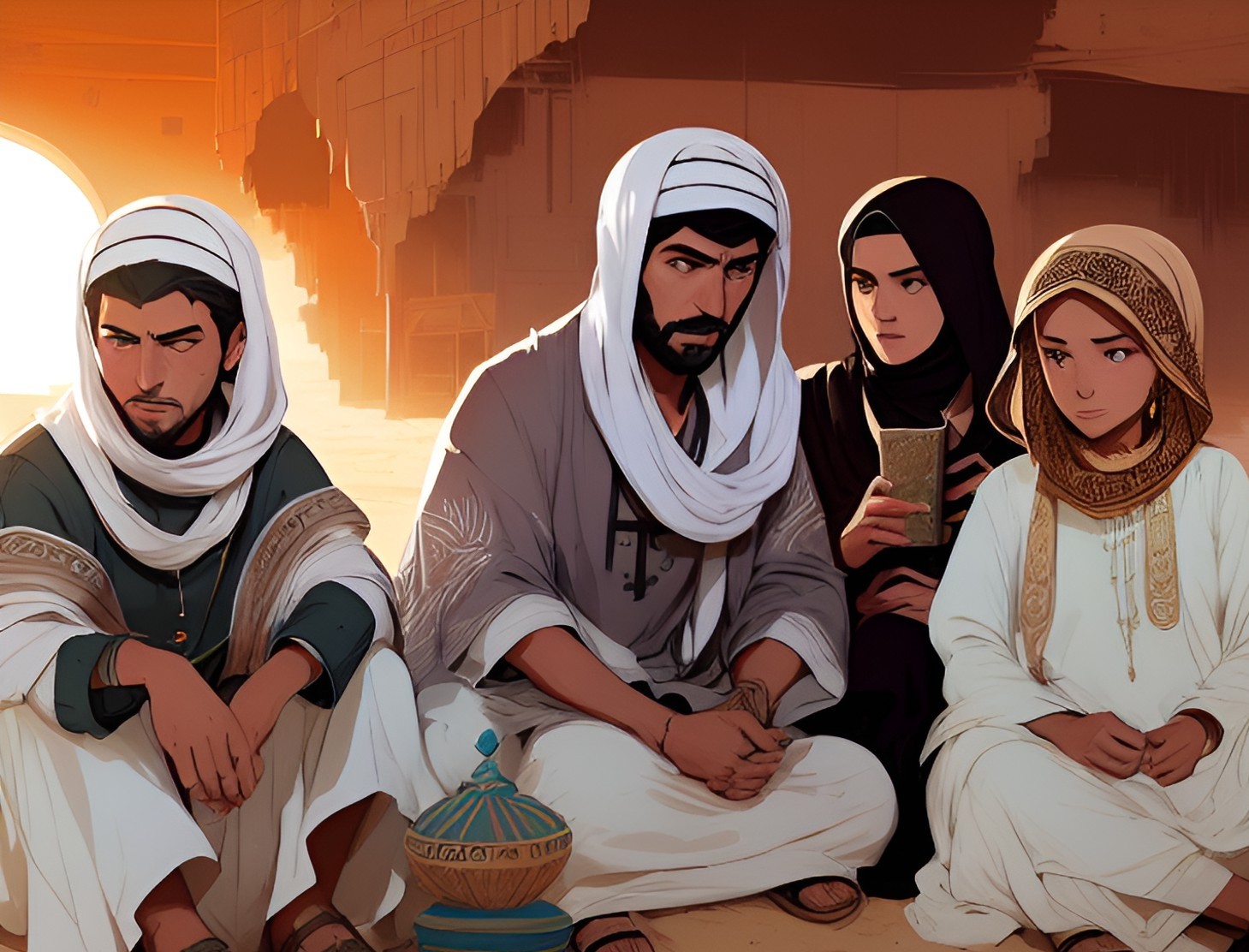
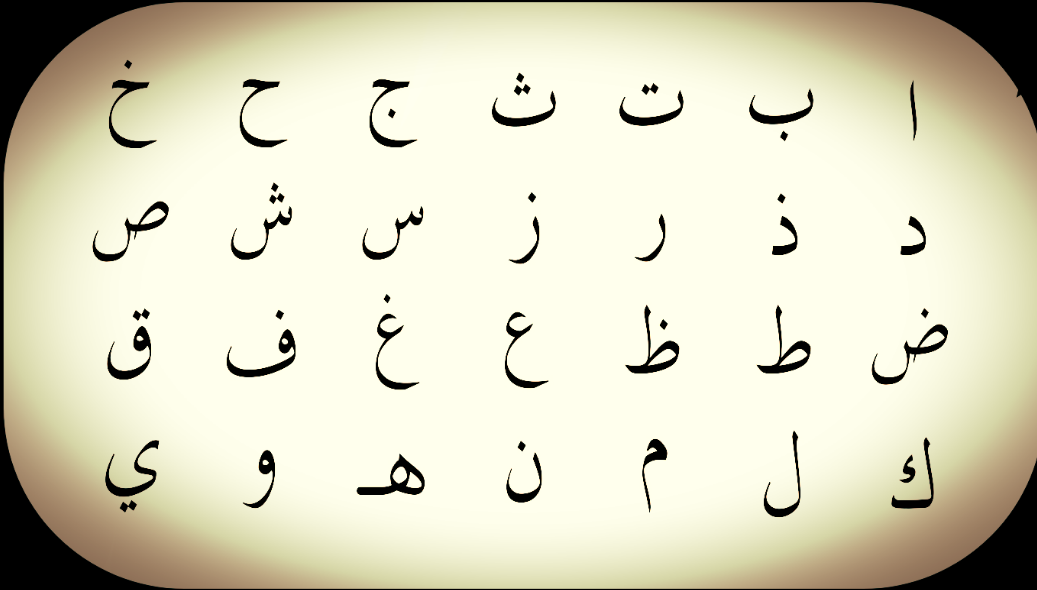
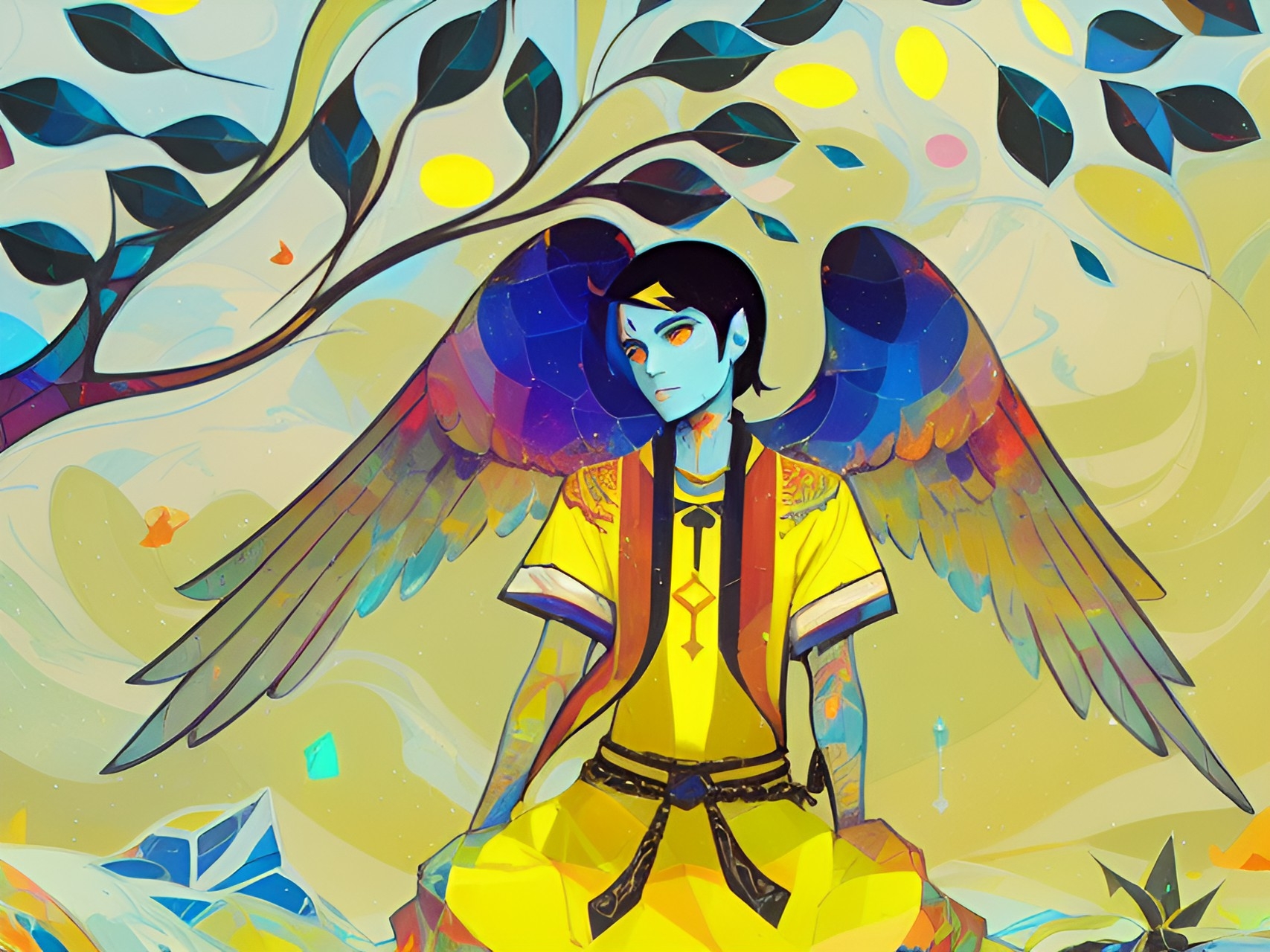
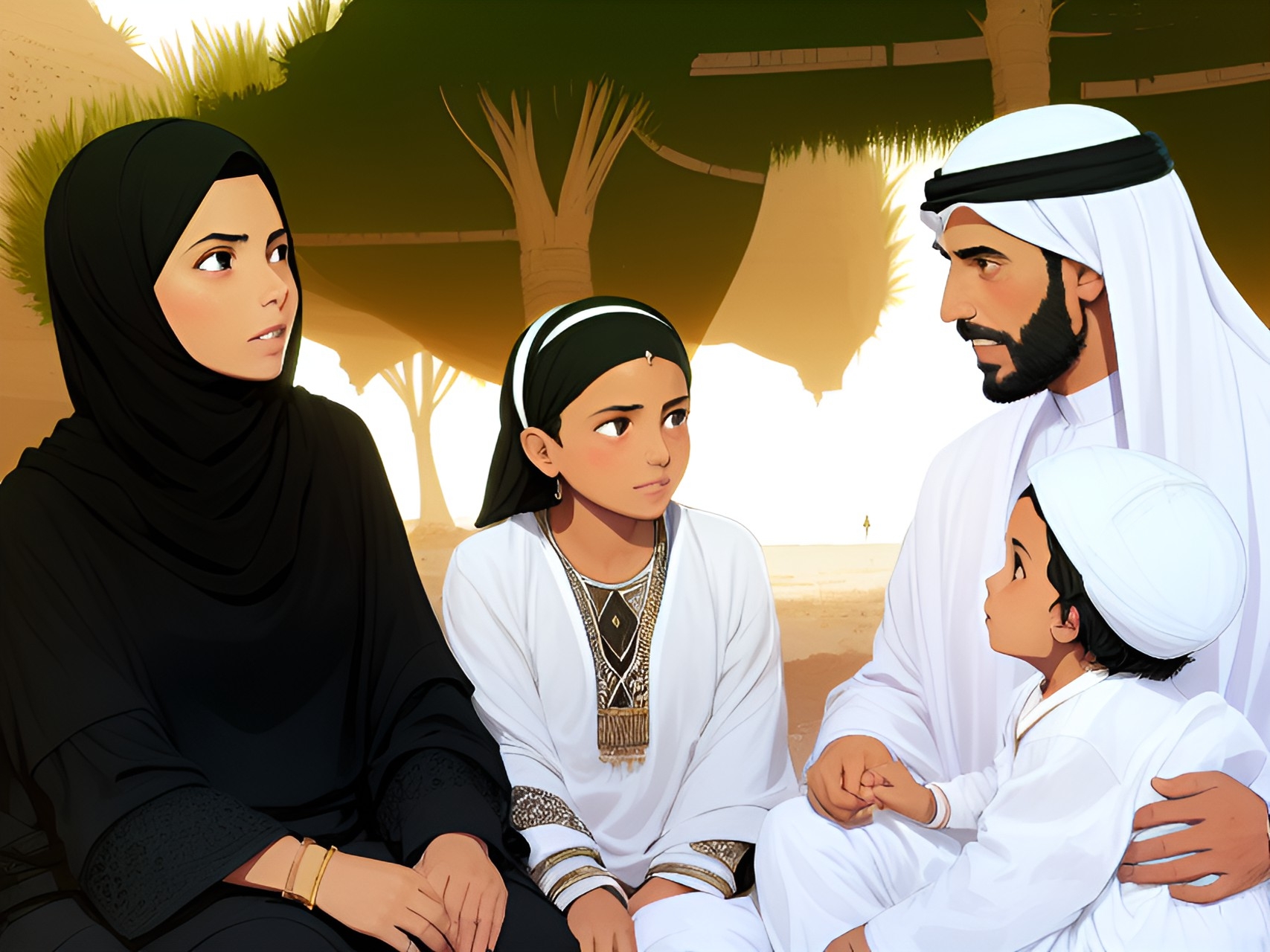

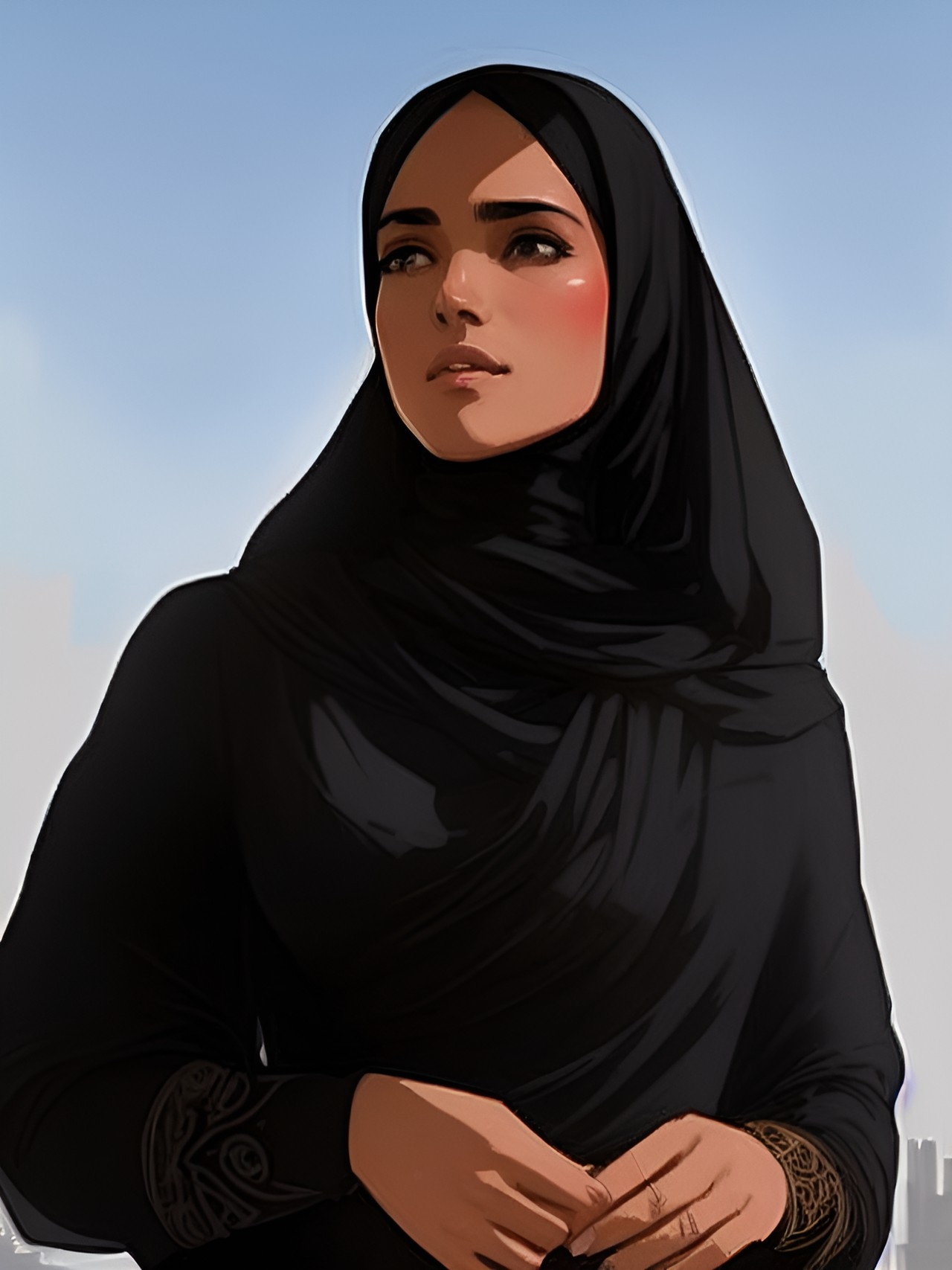
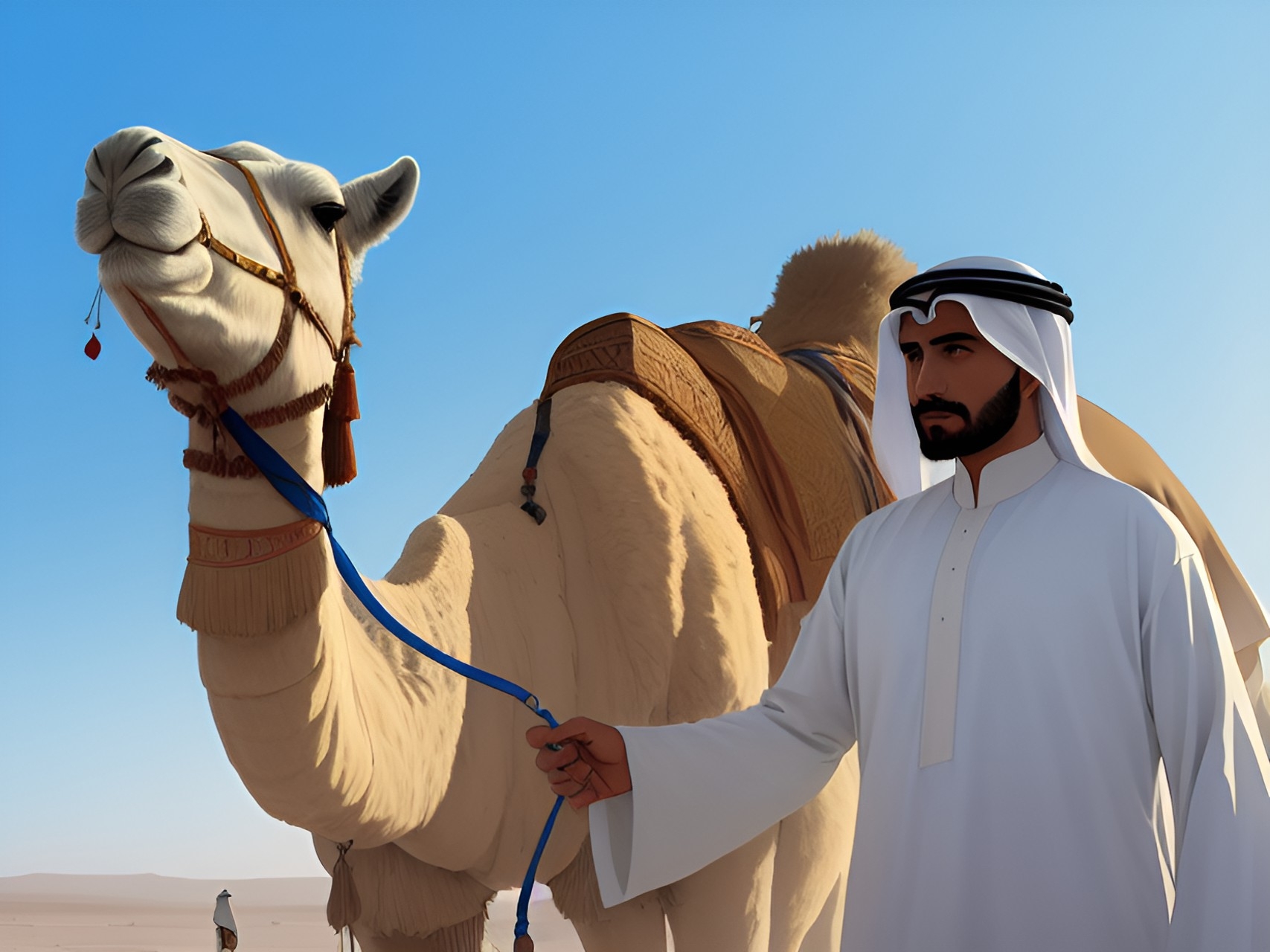
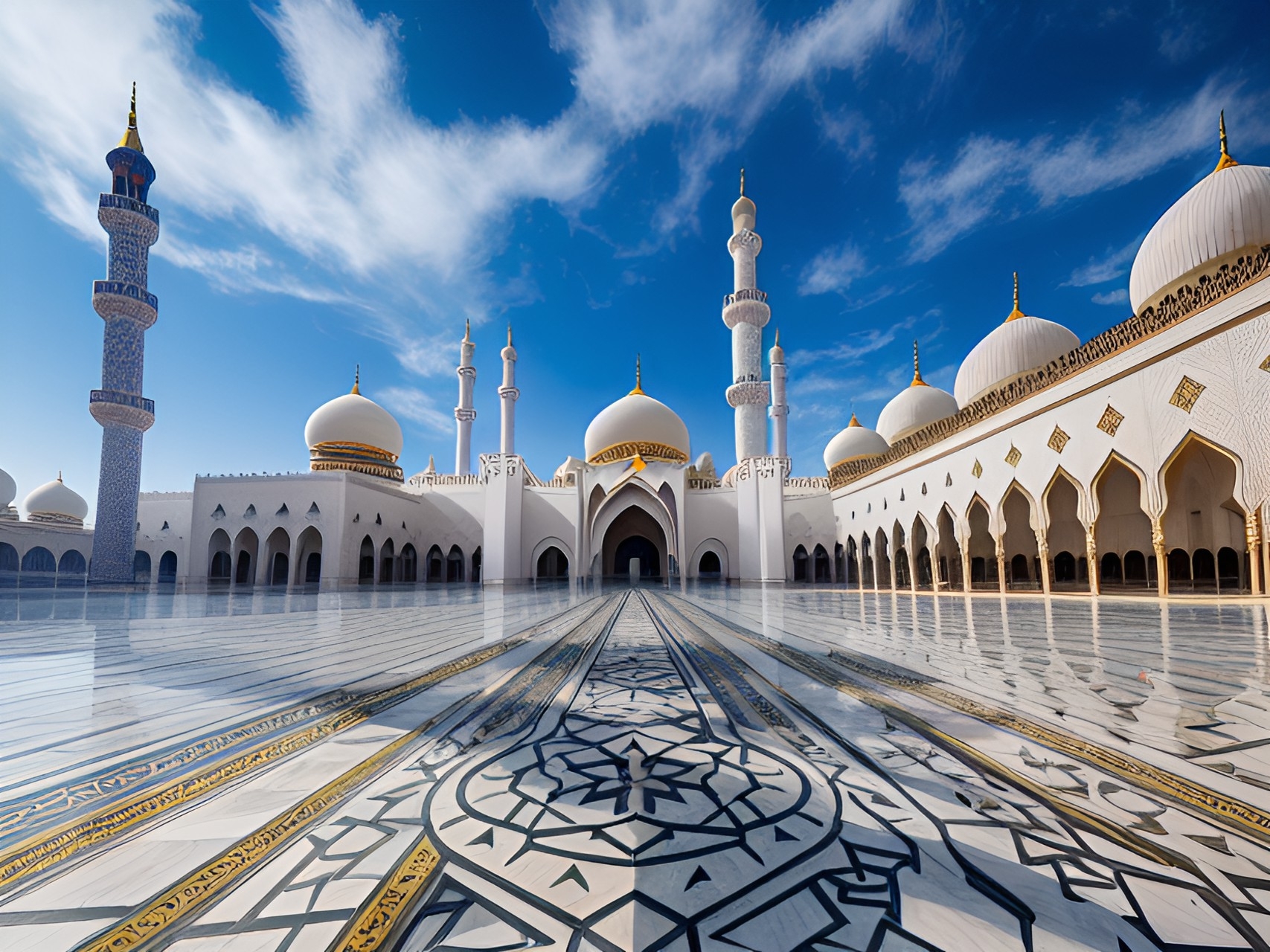
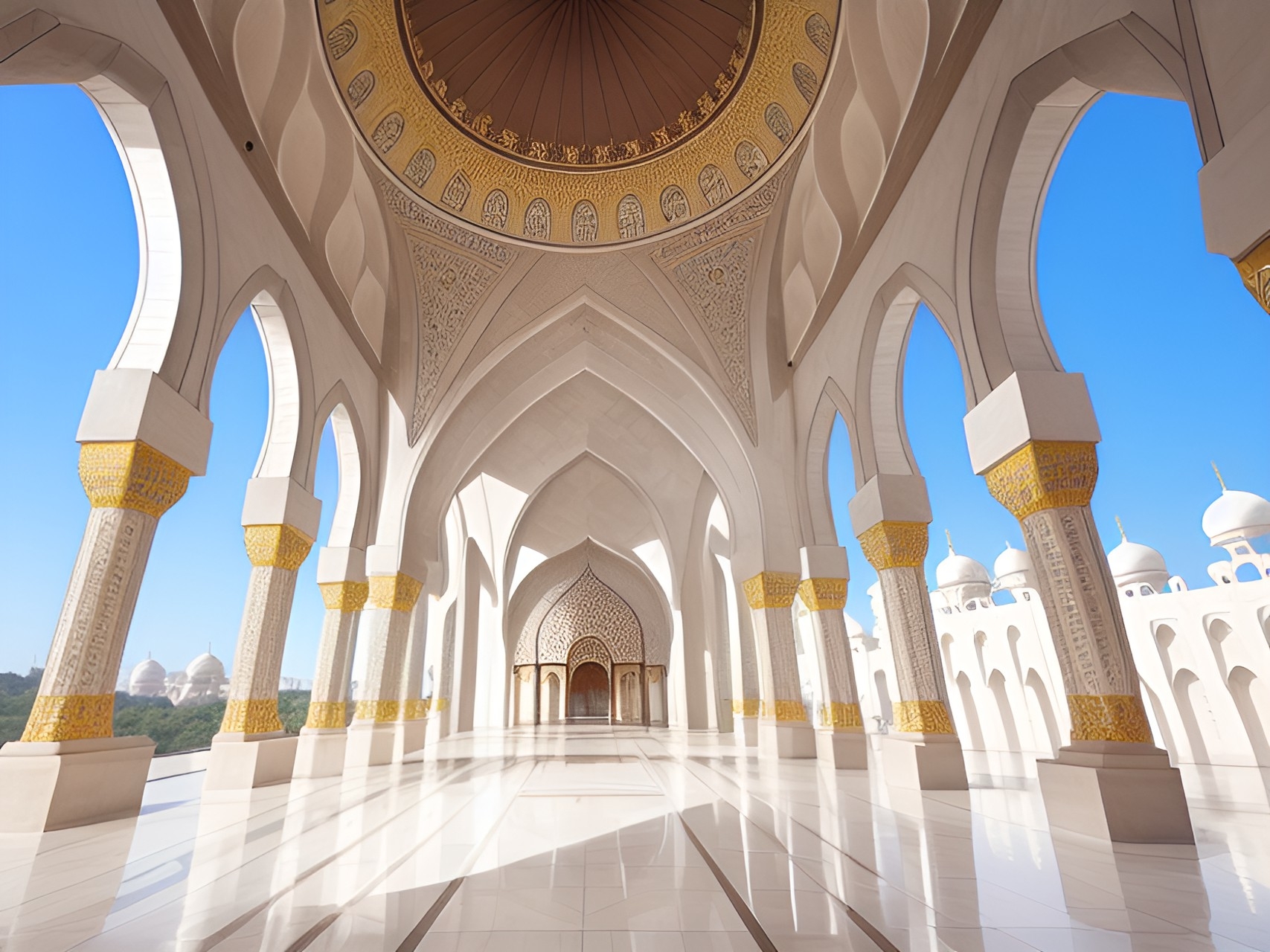
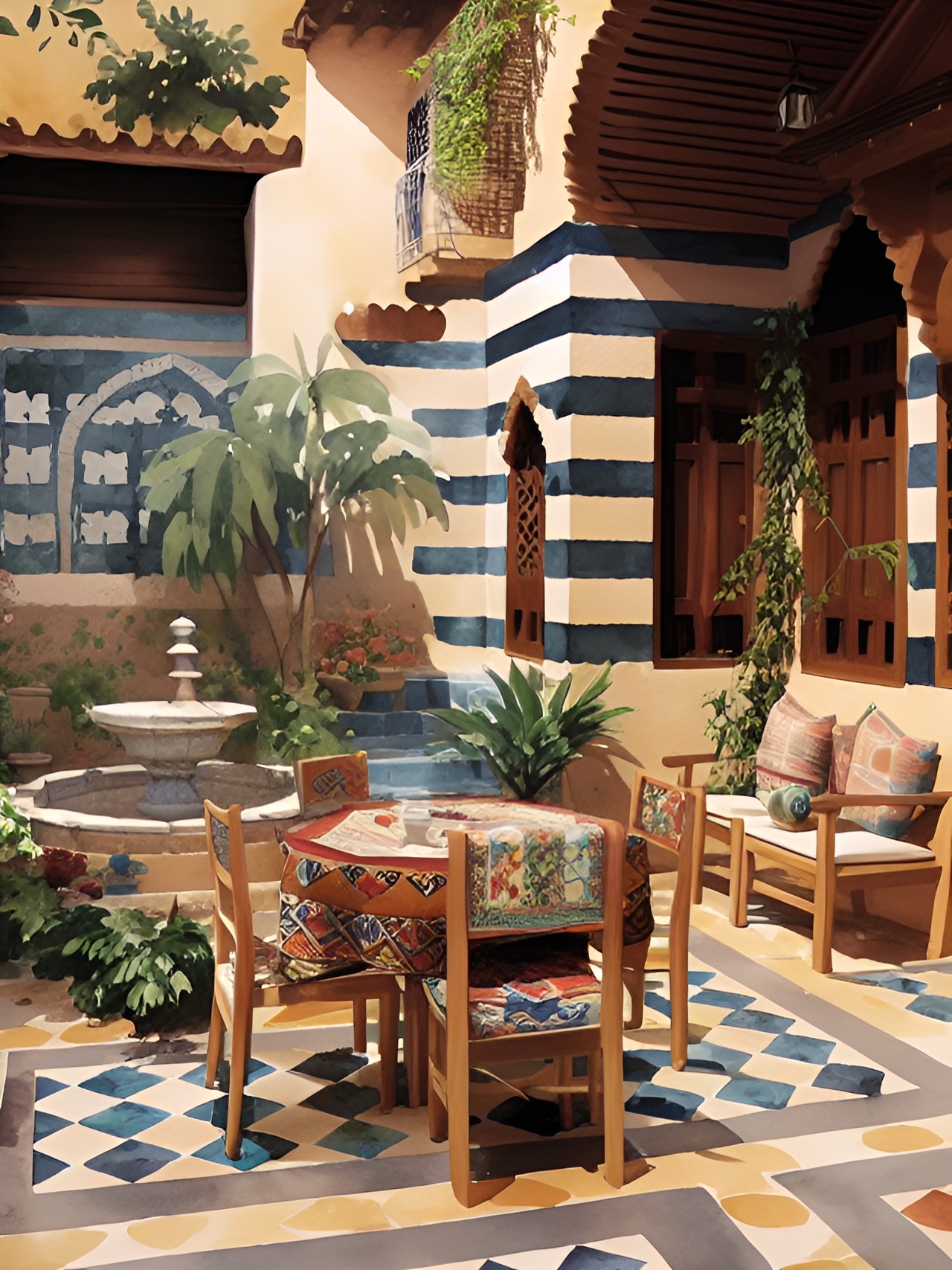
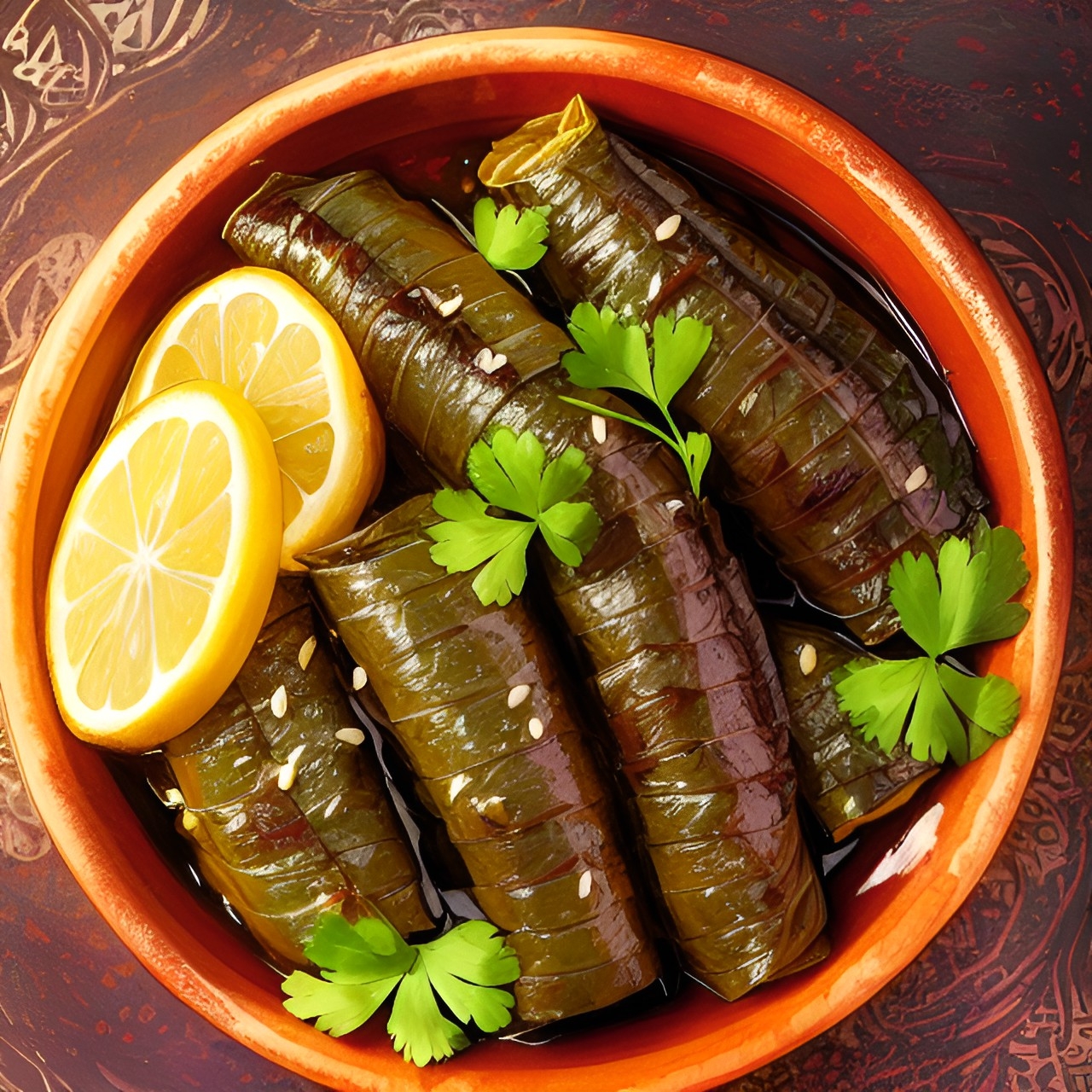



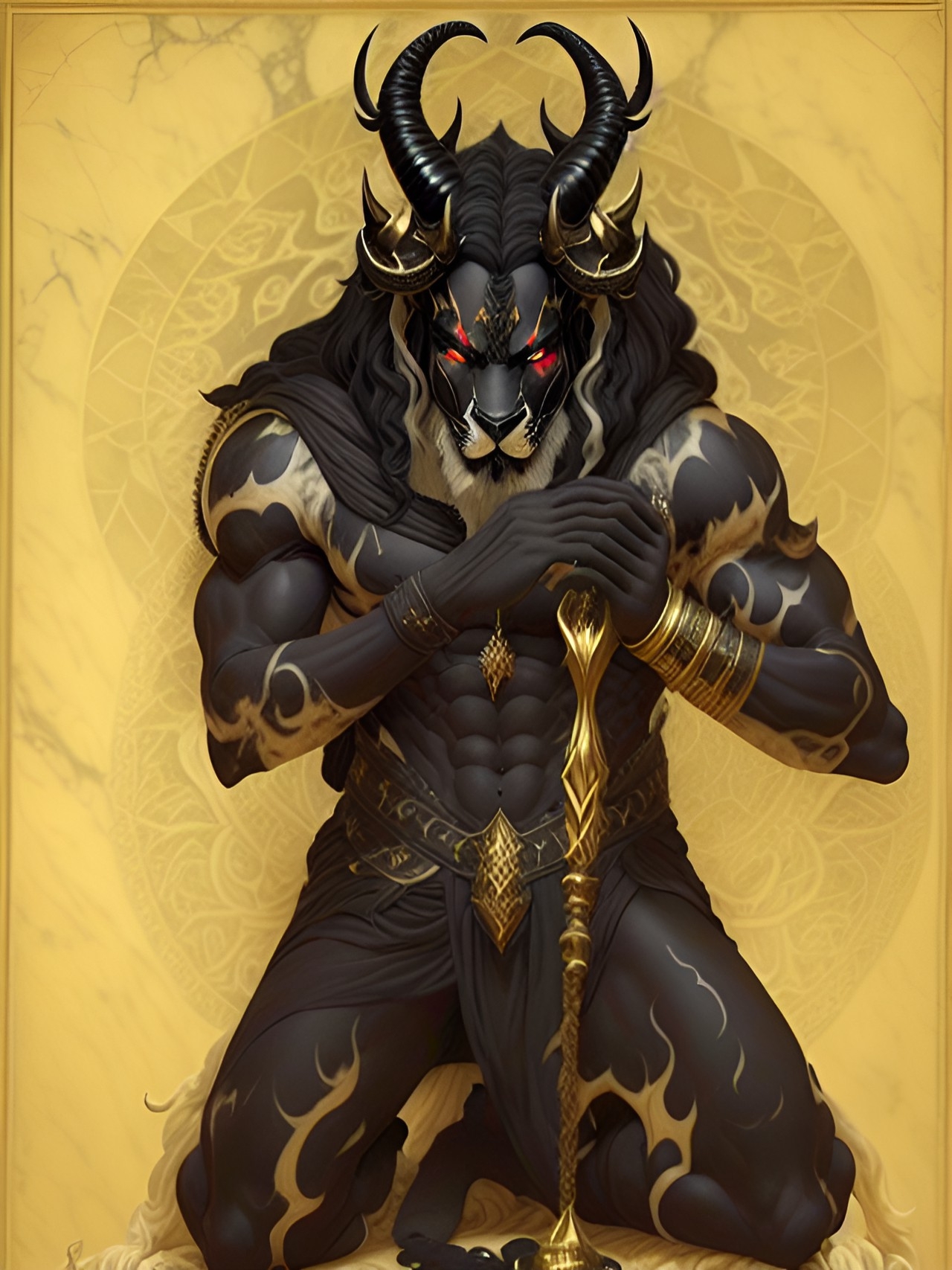
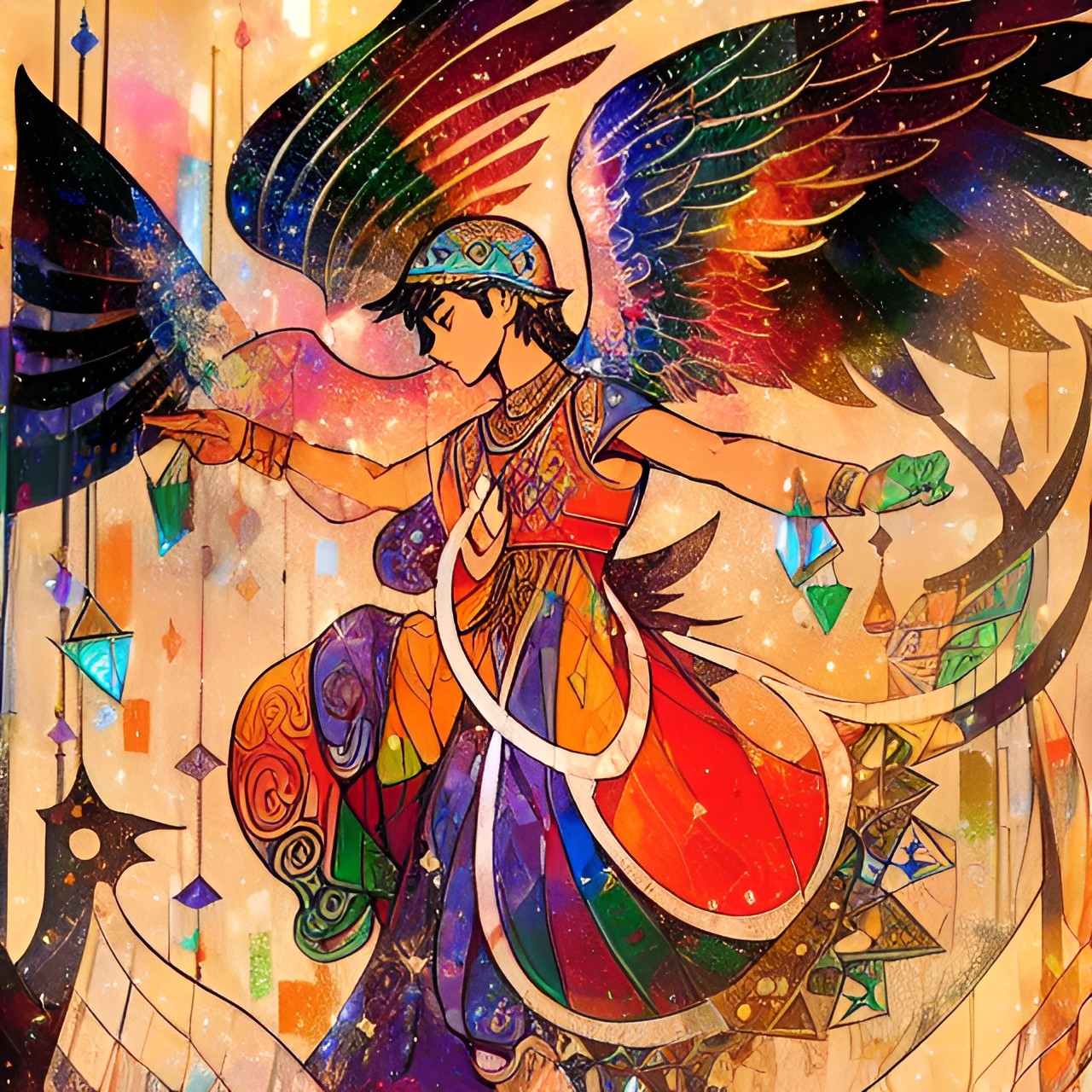
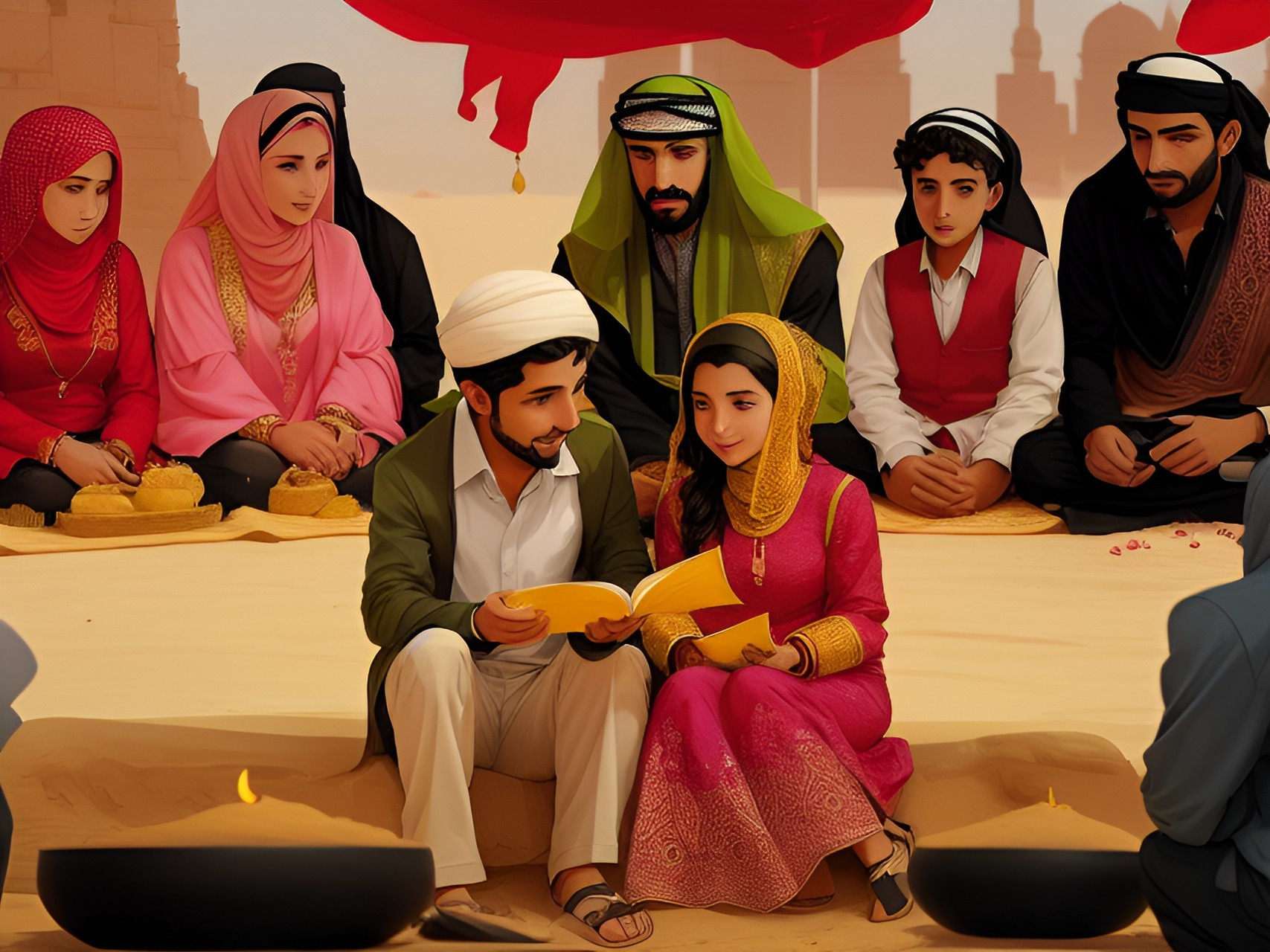
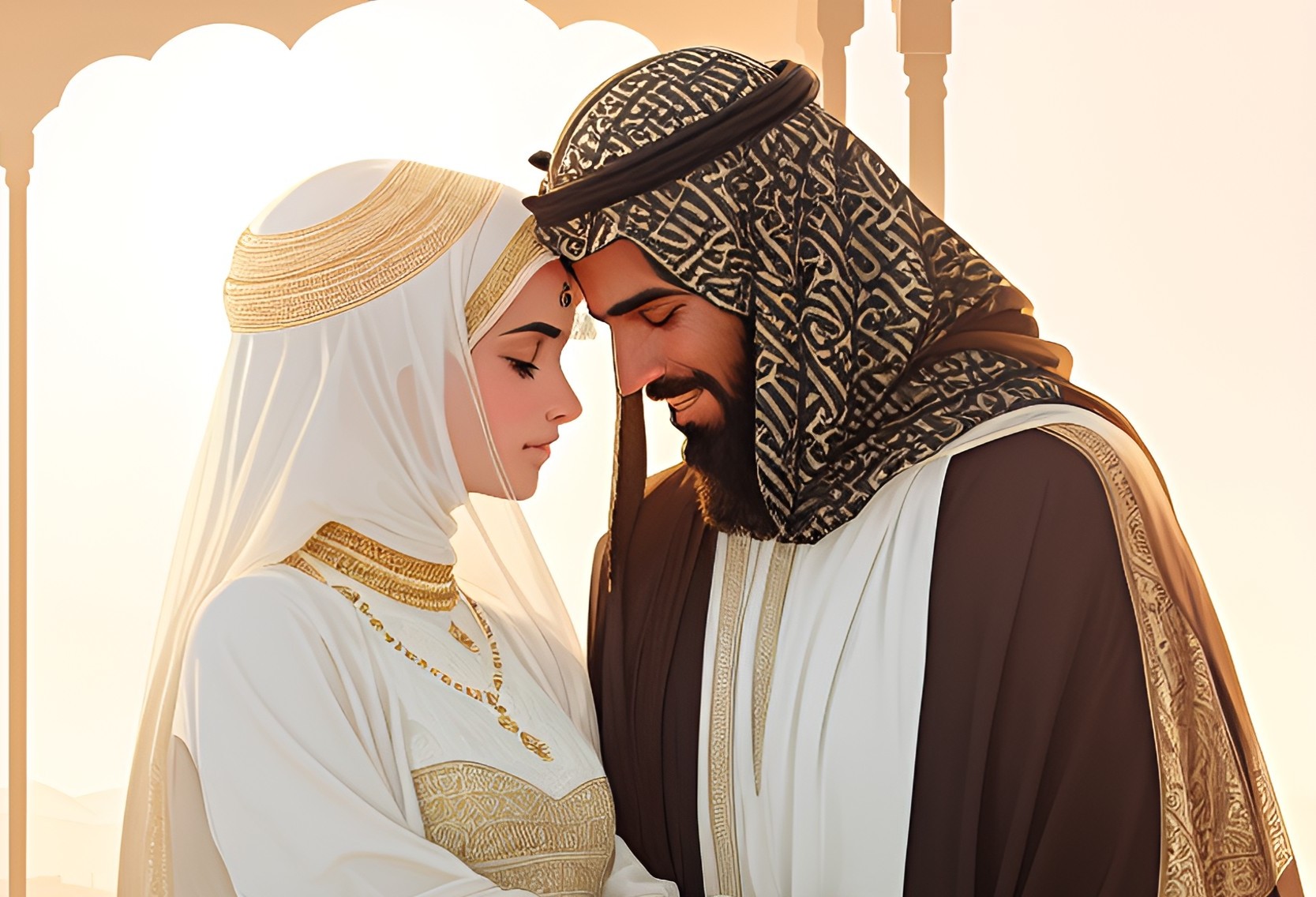
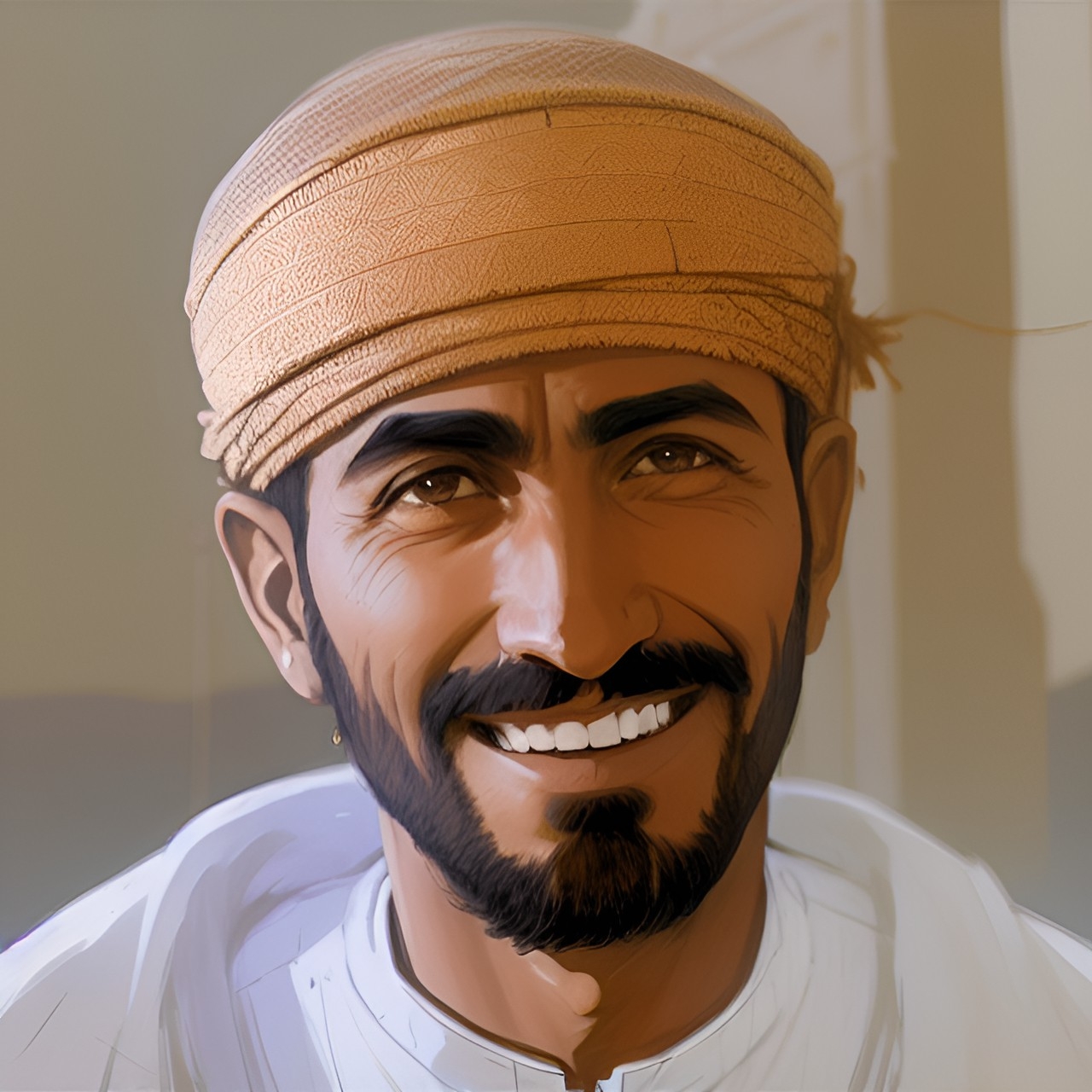


Comments